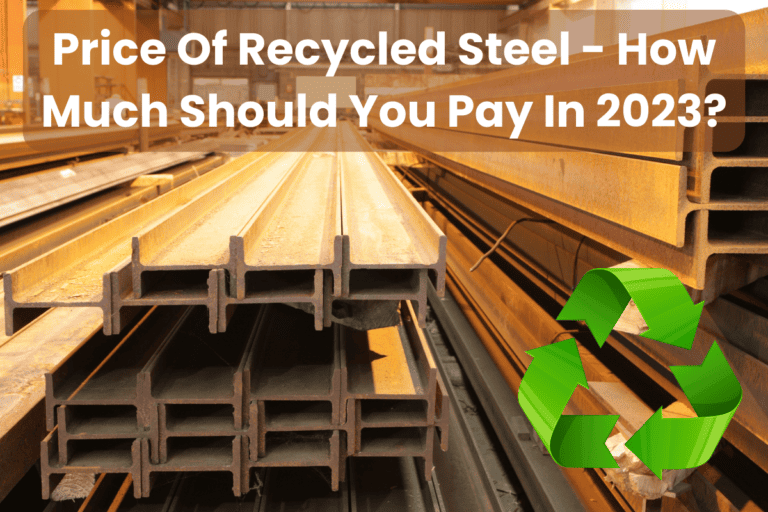How Can You Achieve a Self-Sustaining Home? (Ultimate Guide)

Self-sustaining homes supply everything you need to live a comfortable life independently, including food and waste management.
Many people dream of a self-sufficient lifestyle.
A self-sufficient home is attainable if you have the will and know where to start.
You can achieve a self-sufficient home by producing your own food, supplying your own water, and generating your own electricity. Managing your waste independently of public services will also increase your self-reliance. Ultimately, you’ll save money, reduce waste, and protect the environment.
In this article, I’ll explain how you can make your home self-sufficient.
You’ll also learn how to make the transition to a self-sustaining lifestyle easier and the benefits you can expect.
7 Practical Steps for Creating Self-Sustaining Homes
Self-sustaining homes are great for your pocket and the environment by saving you money and reducing your carbon footprint.
As a result, a life of self-reliance is worth pursuing, even though the upfront investment may be high.
You can build a self-sufficient home from scratch or improve your existing residence to be more self-sufficient. If you’re building from scratch, you might want to consider using straw bales, which we cover in our article here.
Start small to make the transition gradually. You don’t need to become completely self-sufficient in one fell swoop.
Begin with lighter projects and move to the more demanding ones as you gain more knowledge or as your budget allows.
Let’s take a look at 7 steps you can take to become self-sufficient:
1. Produce Your Own Food

Taking charge of your food supply is an important step towards self-sufficient living. Moreover, you can have higher-quality meals for a healthy lifestyle if you produce them yourself.
Here’s how you can produce your food:
Set Up a Garden and Grow the Essentials
Chances are that you currently consume a lot of farm produce and spend large amounts of money on those trips to the grocery store. Grow your favorite vegetables, fruits, and herbs to save money and enjoy healthier meals.
If you lack the space for a garden, consider growing your food in containers or raised beds.
Keep Chickens
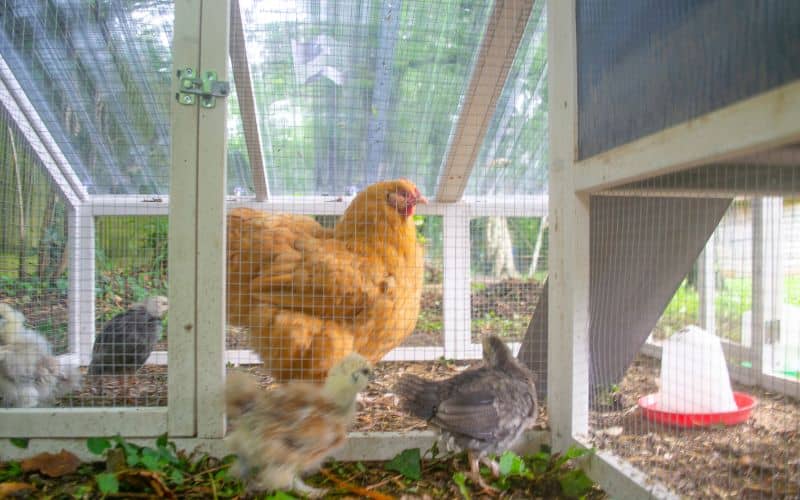
Keeping chickens on your compound will give you fresh eggs and healthier meat if you enjoy eating eggs and white meat.
The chickens can also help you control pests and weeds in your garden. If you have enough space, expand your poultry with ducks.
Apart from providing eggs and meat, ducks will also help keep your home clean by controlling slugs on your compound.
Moreover, the poultry will support your waste management efforts by consuming your kitchen scraps.
Keep Cows or Goats for Fresh Milk
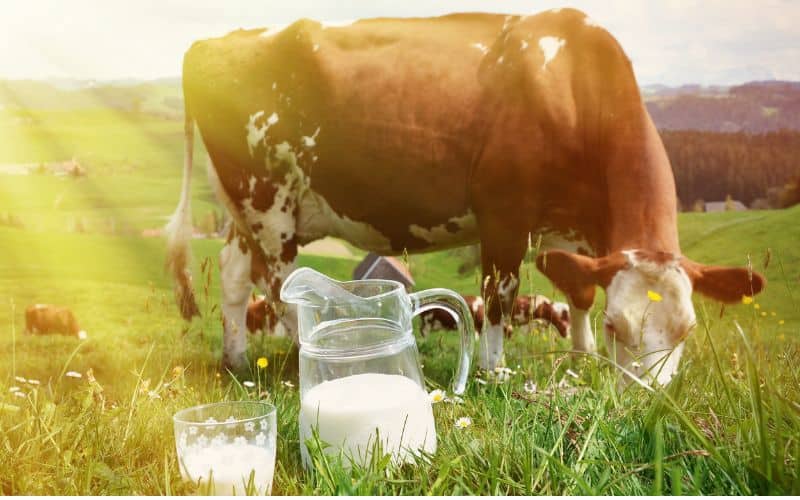
If space isn’t a limitation, consider keeping a few cows or dairy goats to give you fresh milk.
They will also consume your garden waste and make your waste disposal burden lighter. The animals will also give you manure for your vegetable garden.
You may end up with more vegetables and other fresh produce than you can consume quickly. Therefore, it would be wise to either preserve the excess food or sell it for a small profit.
2. Build an Independent Water Supply
It’s hard to create a genuinely self-sufficient home without a water supply independent of municipal delivery. We all need drinking water, and you’ll need water for washing clothes, dishes, and bathing, as well as for the animals and garden.
Here’s how you can build an independent water supply to enable off-grid living:
Drill a Well

Sinking a water well on your property can take as little as half a day to finish. Well-drilling services are typically charged by the foot. Depending on your requirements, you can expect to spend anywhere from $1,500 to $20,000 on a well-drilling project.
If groundwater is only a few feet from the surface in your area, you could save significantly on the drilling service and have a steady water supply.
Only having to pump the water a short distance to the surface will save you money on pumping, too.
Harvest Rainwater
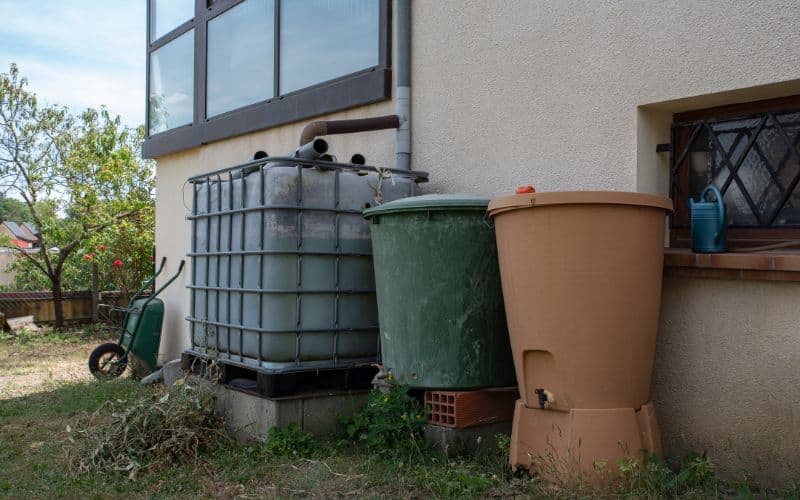
Rainwater is a renewable resource you can tap for free. Harvesting rainwater can supplement your well water source and make your home more self-sufficient.
Install a rainwater collection system. It could be as simple as old barrels or a surface tank. You can also build an underground rainwater storage system. Installing a 500 to 2,500-gallon (1,892 to 9,463 liters) rainwater harvesting system can cost $2,000 to $7,000.
Depending on where you live, you may be eligible for a tax rebate if you install a rainwater collection system on your property.
If you collect rainwater, you should have a water treatment or filtration system to make water from your local sources suitable to use throughout the home.
Besides saving you money, off-grid living will also spare you the frustration of relying on sometimes intermittent municipal services.
3. Install Alternative Energy Systems
Heating, cooling, and lighting leave you with huge power bills. One thing you can do to save energy is to use energy-efficient appliances in your home.
However, a better way is to generate your own energy.
Installing renewable energy systems to generate your own energy will save money, protect the environment, and make you more self-reliant.
Here’s how you can use renewable technology for energy production to generate as much energy as you need to run your home:
Install Solar panels
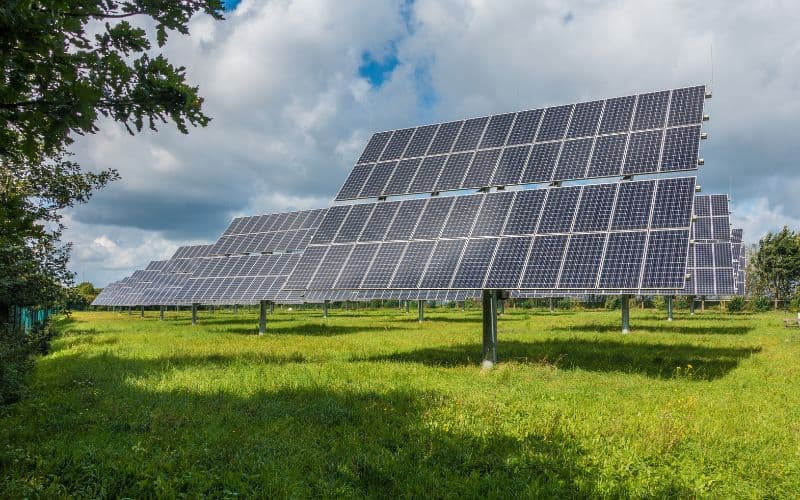
Solar Power Systems on your rooftop and other strategic locations around the home will generate clean, renewable energy for you.
Solar panels convert sunlight into electricity that can power any electrical appliance in your home. Using energy-efficient appliances will help this energy go even further.
The solar power system works better in areas that receive plenty of sunshine. Since there’s no sunshine at night, you need to store the excess energy during the day for use at night.
Therefore, you should have a battery storage unit for your solar panels.
Installing a 5-kW residential solar power system can cost $15,000 to $25,000.
Install Wind Power Turbines
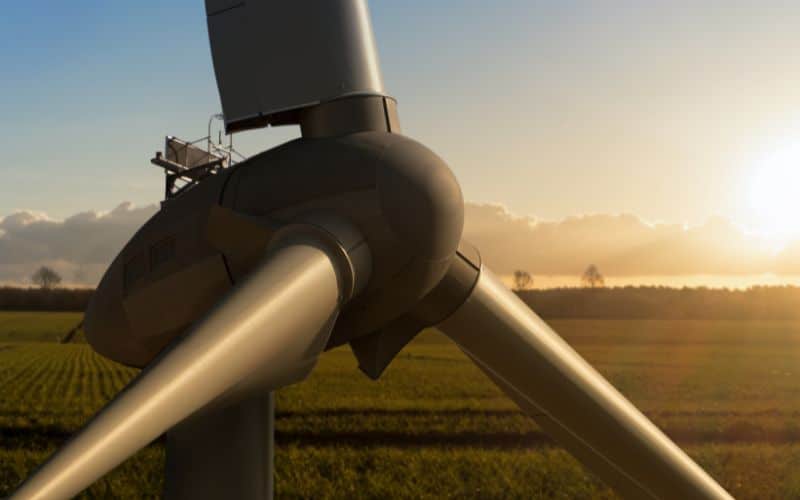
The wind is another source of clean, renewable energy. You should consider installing wind power turbines on your property. As with the solar energy system, you should have an energy storage unit since wind is intermittent.
The installation cost ranges from $3,000 to $8,000 per kilowatt for wind turbine systems under 100 kilowatts.
Set Up a Biogas Plant
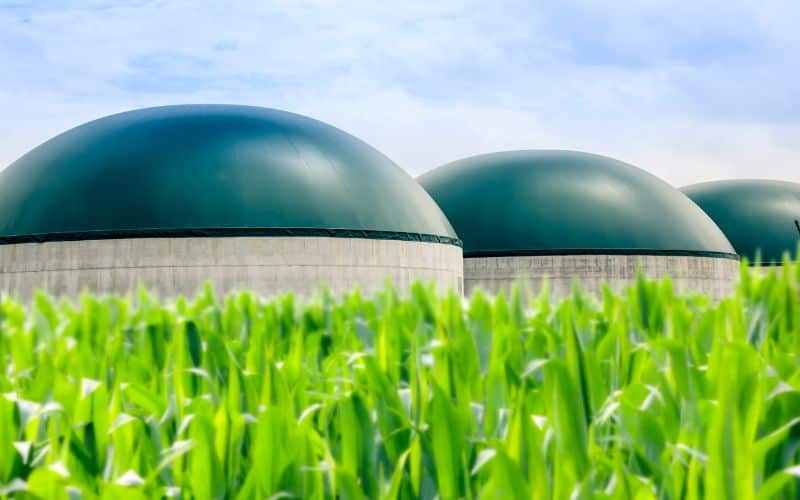
Biogas fuel is worth considering for a self-sufficient home. Biogas is a simple technology that produces renewable fuel by breaking down organic matter. Think of food waste and animal waste as the feedstock for this system.
You can use biogas fuel for cooking and heating. It can also work as a car fuel. Moreover, biogas can be transformed to generate electricity for home appliances and electric car charging.
Apart from giving you energy, a biogas system will also contribute to your waste management efforts.
Animal waste and wastewater will go into the system. Moreover, the biogas liquid by-product is a great bio-fertilizer for your farm.
The government rewards households’ efforts to generate renewable energy in a self-sustainable home. As a result, you may be eligible for various tax credits if you generate your own power by investing in solar panels, wind, or biogas renewable energy systems at your home.
4. Conserve Water and Electricity
No matter how much water or electricity you produce on-site at your off-grid home, you may never achieve true sustainability if you don’t control your consumption.
Therefore, you should strive to conserve your resources. After all, the spirit of sustainability is getting more from less and reducing waste.
Here are a few simple ways you can save water at home in your efforts to go off-grid:
Use Drip Irrigation on Your Farm
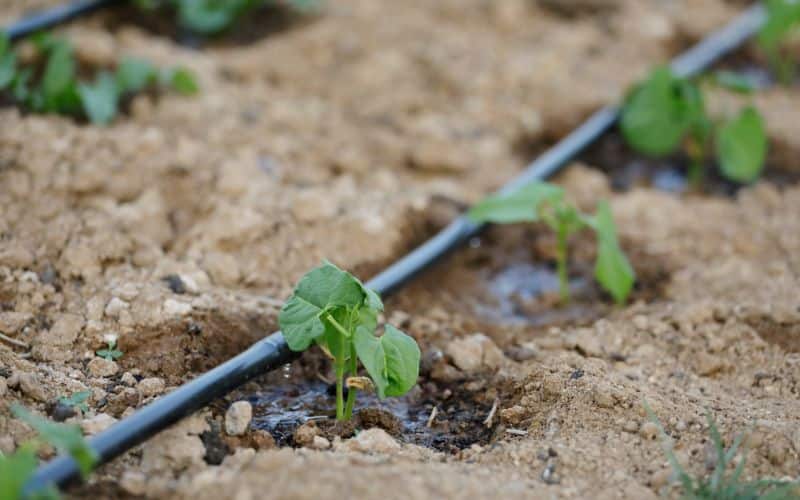
Irrigating your vegetables, herbs, fruits, and other plants will consume a lot of water. You can minimize water use by installing a drip irrigation system.
With drip irrigation, you can cut your farm’s use consumption by up to 60% and improve crop yield by 90% over traditional irrigation methods.
You can also utilize greywater systems to water your garden.
Check and Fix Leaks

A leaking toilet can cost you gallons of water daily, running up your water bill. Perform a simple experiment to check if your toilet is wasting water. Here’s how you can check your toilet for leaks:
If you have food coloring, put a few drops in the toilet tank and don’t flush it.
Allow 10 minutes to pass and check back.
If the coloring appears in the toilet bowl, your toilet is leaking and should be fixed.
Similarly, check the kitchen sink and other water points for leaks and fix them.
Run the Washing Machines on Full Loads

Running the laundry machine and the dishwater frequently will waste many gallons of your precious water. As a result, only run these machines when you have full loads.
Also, avoid using your dryer too much since this can take up unnecessary energy. Instead, dry your clothes naturally wherever possible.
Get Water-Saving Shower Heads
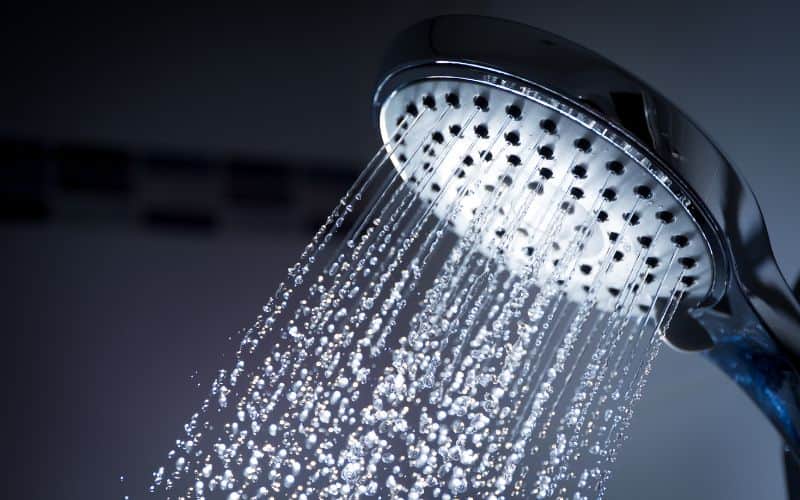
Install water-saving shower heads in your bathroom. If you combine that with shorter shower times, you could save a lot of water.
Here’re a few energy-saving tips:
Light your home with LED bulbs. They consume less energy and last longer than conventional bulbs.
Get energy-efficient appliances and systems. Make sure you purchase energy-saving equipment, from washing machines to freezers and home heating systems.
Build with energy-efficient materials. If you’re creating your off-grid home from scratch, consider using energy-efficient building systems such as Structural Insulated Panels, which will reduce air conditioning costs during the summer and keep you warmer than the average home during colder months.
Wash clothes with cold water. Washing clothes with cold water will conserve energy and extend your clothes’ lifespan.
5. Produce Your Own Livestock and Pet Feeds
If you can produce your own food, why not go further and produce your animal feeds? You can convert kitchen waste into high-protein animal feed if you have chickens and dogs.
Here’re a few tips to produce your chicken and dog feed at home:
Cricket Farming
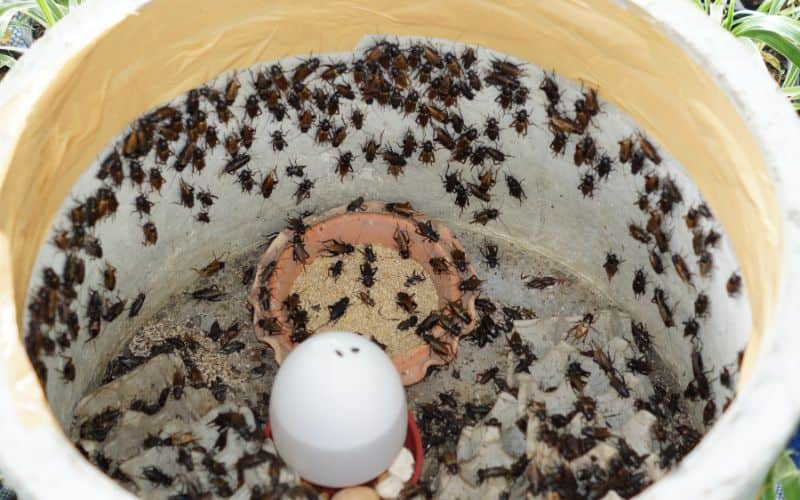
Cricket farming as an alternative source of protein for humans and animals is seeing a growing adoption worldwide. This farming practice takes a small amount of space and is highly efficient on resource requirements.
Crickets are a source of high-value protein and can be fed to chickens and dogs. You can obtain a cricket breeder kit to get you started.
Try this Neptonion Professional Cricket Keeper Live Worm Organizer Tank from Amazon.com. Your crickets will have lots of space in this tank, and you won’t have to worry about touching the insects to take care of them.
Black Soldier Fly Larvae Breeding

Breeding Black Soldier Fly larvae is another smart method to produce animal food. These worms can feed on virtually any organic waste. They grow rapidly and are a source of high-value food for farm animals and pets.
Here’s a YouTube video to show you how to start Black Soldier Fly larvae breeding at your home:
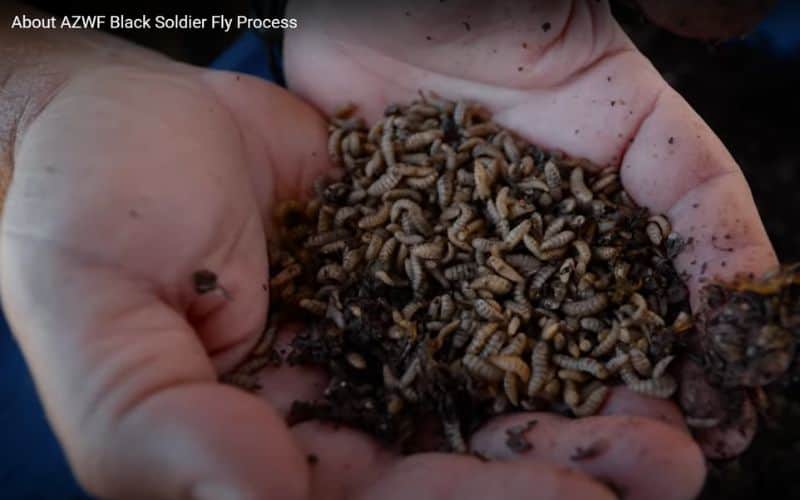
Breeding crickets and Black Soldier Fly larvae will give you food for your livestock and pets and help you manage waste.
Moreover, these insects produce excellent manure called frass, which is great for your vegetable garden and other plantings.
6. Manage Your Waste
Managing waste properly can be a daunting task, even for municipalities. However, waste management in your off-grid home can be easy if you know where to begin.
Here’s how you can manage your own waste:
Install a Greywater System
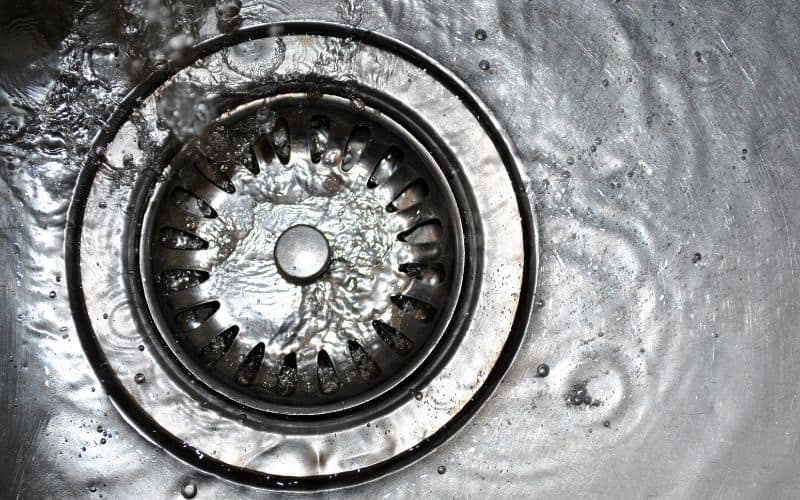
A greywater system will minimize the waste you’ll need to deal with in your home. This system recycles wastewater from the kitchen and bathroom. As a result, you can reuse the water to flush toilets and irrigate your garden.
Since you can recycle wastewater, this system will also support your water conservation efforts to remain independent of outside suppliers.
A greywater system can cost anywhere between $700 and $20,000. The average cost of a domestic greywater system is around $2,500.
The system you need will depend on the quantity of wastewater you want to recycle.
The greywater quality you want can also influence the system selection and cost. The good news is that a greywater system is easy to maintain once put in place.
Install On-Site Sewage System
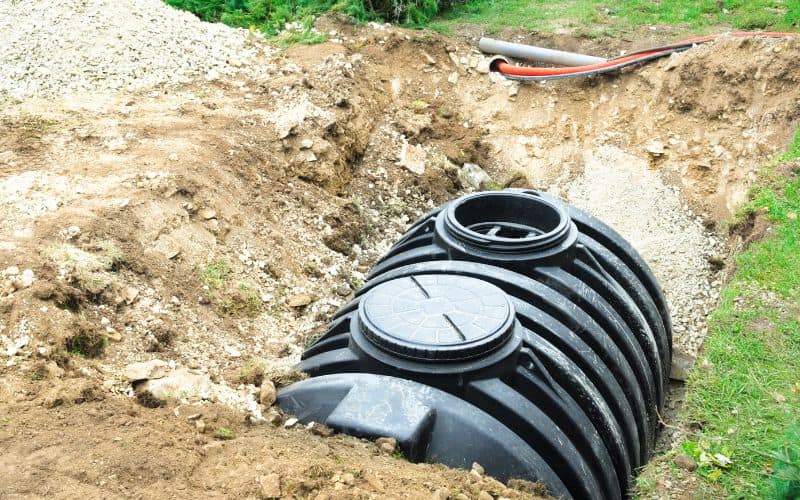
Disposal of toilet waste can be one of the more challenging tasks in pursuing a self-sustaining lifestyle.
The septic system is the most common on-site sewage management method. The system consists of a watertight tank that sits underground. The system receives and treats the waste.
Depending on the size and complexity of the system, installation costs mostly range from $3,000 and $12,000.
You can also install a composting toilet system for about $1,500. The composting toilet may be sufficient for your home, or you can use it alongside the septic tank system for sewage management.
7. Live Frugally

Practicing frugality can make you more self-sufficient. Living a frugal lifestyle doesn’t necessarily mean sacrificing comfort.
Be resourceful; you’ll spend less money, save more, and help the environment.
Here’re a few frugal living tips that can take your pursuit of a self-sufficient life a step further:
Cook at home

Now that you grow your vegetables, herbs, and fruits, you can save a ton of money cooking at home instead of eating out.
Borrow or rent items you won’t regularly use
For items like books and movies, you won’t regularly use, borrow or rent them rather than buy them. You can even rent fancy clothes today.
Sew up torn clothes

You can prolong the lifespan of your clothes and save money by mending them instead of throwing them out.
Build it yourself
If you have the time and skill, there’re many sustainable home projects you can work on yourself. DIY projects can save you money and reduce waste.
Maximize Natural Light

Ensuring your home has plenty of natural light from oversized windows, skylights, or glass doors will help to reduce the amount of artificial light you need. This will save you money on utility bills and reduce your carbon footprint.
How Many Acres Do You Need To Be Self-Sustaining?
The size of land you need to become self-sustaining depends on your family’s needs and the scale of projects you want to carry out. For example, you can grow more food and raise many animals on a large parcel of land. However, you can still become self-sufficient on one acre (0.4 hectares).
Final Thoughts On Self-Sustaining Homes
Self-sustaining homes are within reach of everyone if you know where to begin and the proper steps.
To make your transition to a self-reliant lifestyle more affordable, begin with the more straightforward tasks and build what you can yourself.
Although the upfront cost of creating self-sustaining homes may be high, the effort is worth it in the long run.
If you found this article interesting, you might like to read our article “23 Sustainable Building Materials You Can Use Today.”






